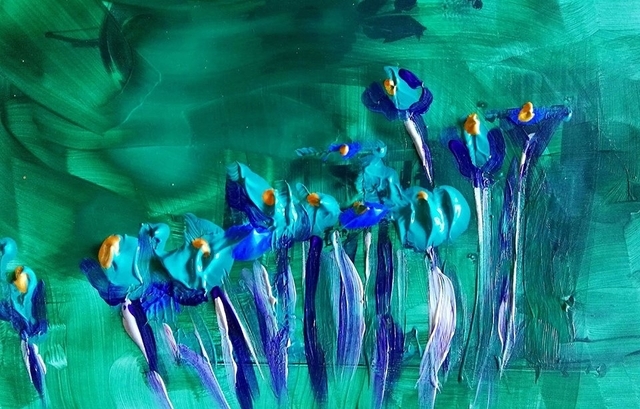Art is a lie that conveys the artist’s own truth. Because of this, it has immense healing power for artists themselves and those that recognize that same truth as their own. Research has shown the benefits of art therapy for depression.
In such a form, art has been a window into civilization’s unconsciousness since times immemorial, but it is only recently that we have discovered a therapeutic potential in the act of embodied creativity.
This is why numerous modern medical professionals support the establishment and promotion of artistic self-expression among individuals afflicted with certain chronic mental conditions. This is how we have discovered the healing power of art therapy for depression.
Learn more about Overcoming Depression in our FREE Holistic Magazine
Art Therapy for Depression : The Power Of Creation
Art is about the act of creation. While it does exist on a spectrum between concept and craft, concept is where it begins and the real shape is realized through craft.
This is, in a way, reflected in therapies for depression – a patient needs to adopt tools to craft and mold new thought patterns, behaviors and conditions. It is also used to invoke positive emotions, but emotional balance is often unachievable without release. Do you know the importance of mental health awareness?
The creation of art creates conditions for such release.
As a matter of fact, scientific research has shown that the creation of art has a profound impact on both physical and mental aspects of any person – and it is usually people that are depressed who are prone to thinking outside the box when engaged with creation.
Use Everything That Draws
If you want to think outside the box, you need to break the shackles that keep you confined to it. It begins with discarding traditional doctrines and using everything at your disposal to express yourself through art.
Only by trying everything will you know what actually suits you, and failure is the best teacher of all – especially the creative failure that leaves you with a chance to start over.
There is something truly powerful about the concept of failing and starting again that cuts deep at the core foundations of depression.
There is no form, only expression – so don’t be afraid to get rid of pencil lines that can so easily be erased. The shape should be drawn with a strong permanent marker in order to give it a sense of finality.
The gravity of each stroke – be it with a marker, a pencil, a pen, a watercolor or paint – will be felt, which is exactly what you need – enforced determination.
Don’t hesitate to conjure up your mental state by using everything at your disposal – and everything at once, if you feel like it.
Creating Art – Show, Don’t Tell
The key message of this is that creating art gives you a lease to explore without real consequences, and truly delve into the issues that wear you down through this proxy. Above all else, it is about showing, not telling.
Depressed people often have a hard time expressing their emotions and creating visual art lends them an opportunity to express all the nuances of how they feel and what they think without having to go through the excruciating effort of verbalizing it.
It is a line of communication and many afflicted individuals consider this to be exactly that – which offers a treasure trove of interpretative information for the therapist.
The therapist can, in turn, engage in back and forth by asking specific questions based on observations made. In addition, art therapy also has some extra benefits for the depressed person.
It strengthens their problem-solving skills, it develops their cognitive tools, coping mechanisms and even aids in reaching new levels of empathy.
When it comes to types of creative art therapy, it is mostly limited to painting, drawing and sculpting, but it can also include music and dance therapy as well as drama therapy, in certain conditions.
Art is not the ultimate key that unlocks the secrets of the mind. It is not the be-all and end-all Rosetta Stone of answers, but it is definitely a crucial fragment of the mosaic that fulfills the overall picture (and vision) of therapy.
It is particularly beneficial for people that suffer from depression and by integrating it into comprehensive programs in appropriate environments, it can serve as a form of connective tissue – it is a focal point where therapeutic modalities intersect.
Sharon White the founder of Global Healing Exchange found art to help heal her alopecia (autoimmune, anxiety & stress disorder). The image on this article is one of her artworks. You can see her other artwork here.
You can find much more information on living a holistic lifestyle in these free magazines and on our YouTube channel.
 Diana Smith is a full time mom of two beautiful girls interested in topics related to health and alternative medicine. In her free time she enjoys exercising and preparing healthy meals for her family.
Diana Smith is a full time mom of two beautiful girls interested in topics related to health and alternative medicine. In her free time she enjoys exercising and preparing healthy meals for her family.






